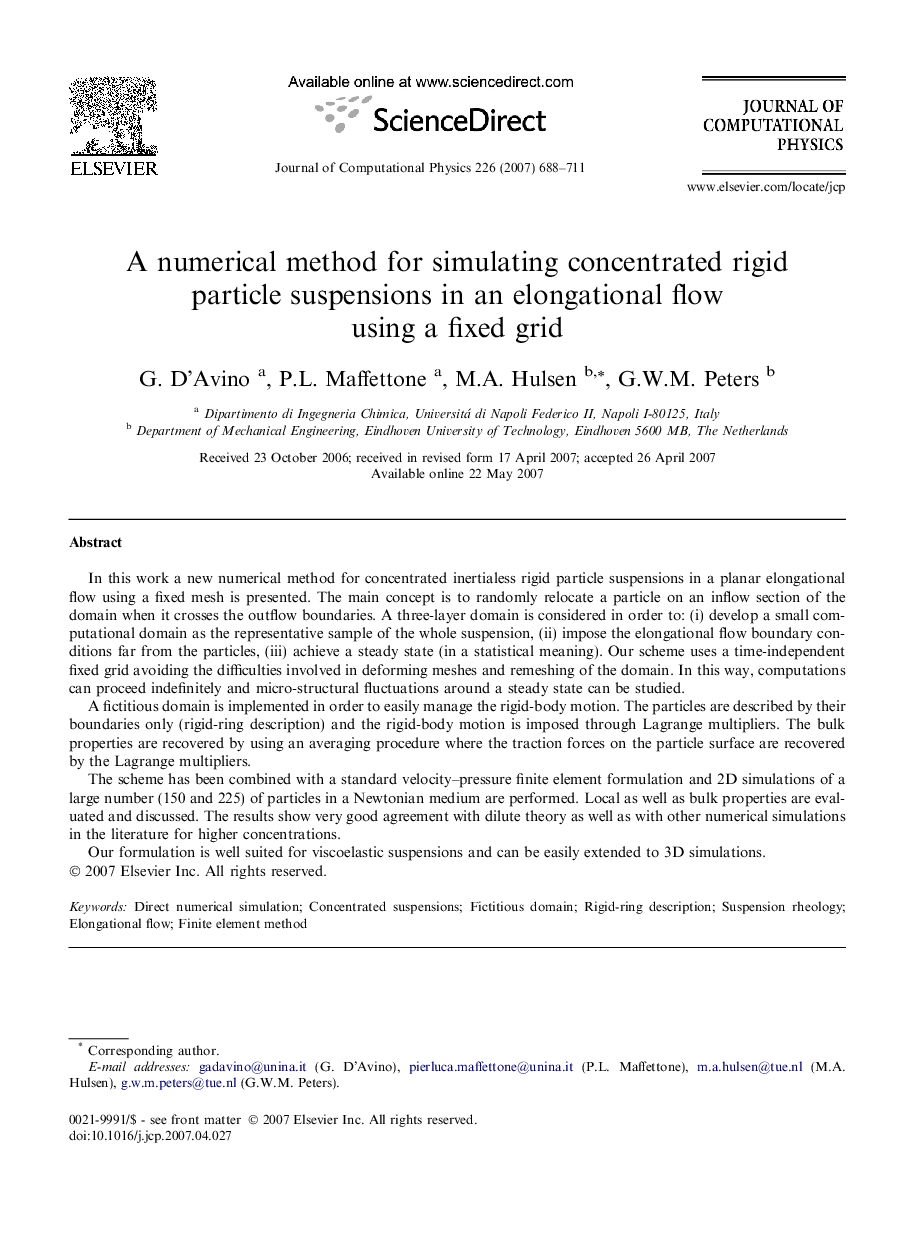| Article ID | Journal | Published Year | Pages | File Type |
|---|---|---|---|---|
| 522461 | Journal of Computational Physics | 2007 | 24 Pages |
In this work a new numerical method for concentrated inertialess rigid particle suspensions in a planar elongational flow using a fixed mesh is presented. The main concept is to randomly relocate a particle on an inflow section of the domain when it crosses the outflow boundaries. A three-layer domain is considered in order to: (i) develop a small computational domain as the representative sample of the whole suspension, (ii) impose the elongational flow boundary conditions far from the particles, (iii) achieve a steady state (in a statistical meaning). Our scheme uses a time-independent fixed grid avoiding the difficulties involved in deforming meshes and remeshing of the domain. In this way, computations can proceed indefinitely and micro-structural fluctuations around a steady state can be studied.A fictitious domain is implemented in order to easily manage the rigid-body motion. The particles are described by their boundaries only (rigid-ring description) and the rigid-body motion is imposed through Lagrange multipliers. The bulk properties are recovered by using an averaging procedure where the traction forces on the particle surface are recovered by the Lagrange multipliers.The scheme has been combined with a standard velocity–pressure finite element formulation and 2D simulations of a large number (150 and 225) of particles in a Newtonian medium are performed. Local as well as bulk properties are evaluated and discussed. The results show very good agreement with dilute theory as well as with other numerical simulations in the literature for higher concentrations.Our formulation is well suited for viscoelastic suspensions and can be easily extended to 3D simulations.
